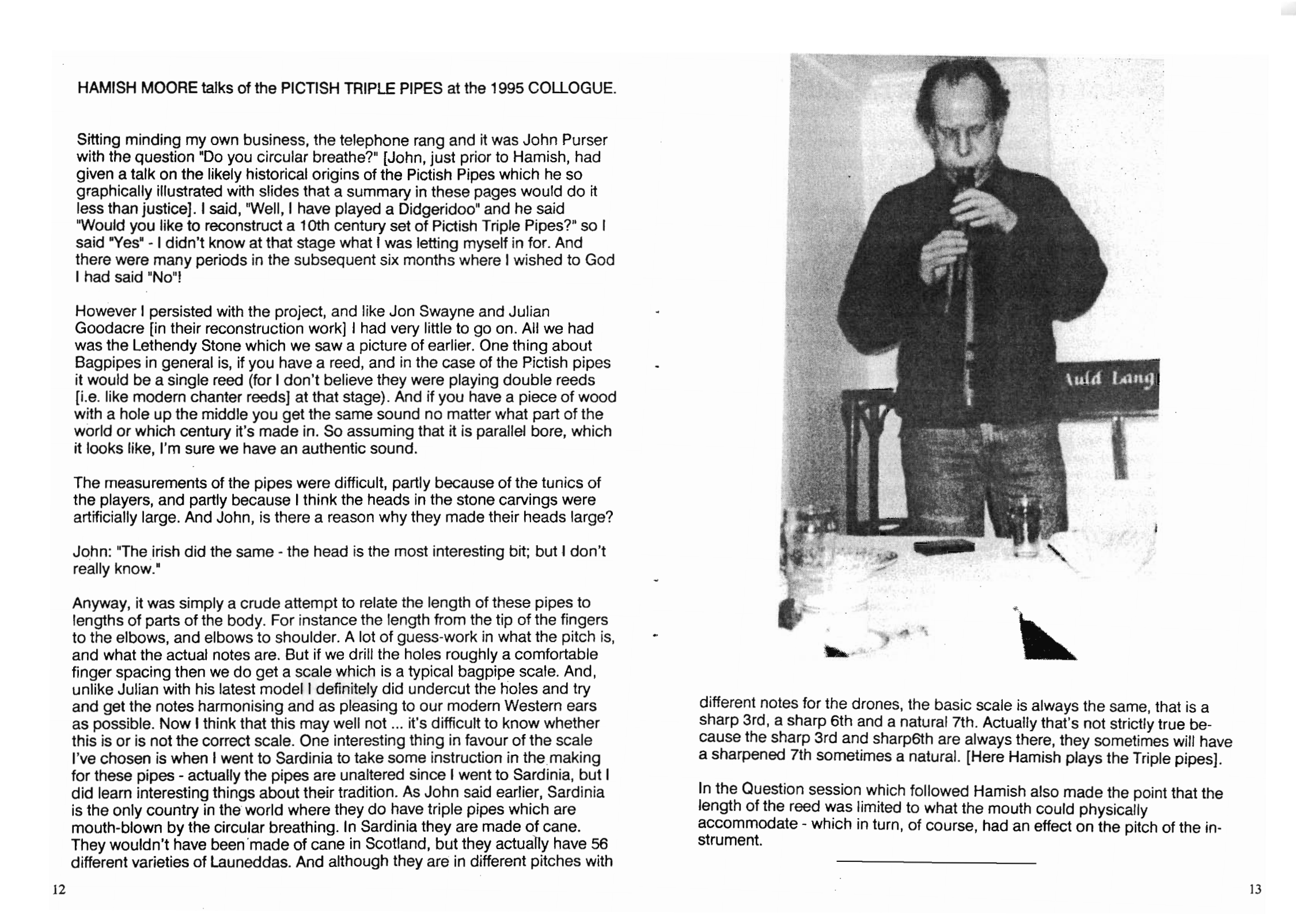Hamish Moore Talks of the Pictish Triple Pipes
>

Sitting minding my own business, the telephone rang and it was John Purser with the question “Do you circular breathe?” [John, just prior to Hamish, had given a talk on the likely historical origins of the Pictish Pipes which he so graphically illustrated with slides that a summary in these pages would do it less than justice]. I said, “Well, I have played a Didgeridoo” and he said “Would you like to reconstruct a 10th century set of Pictish Triple Pipes?" so I said “Yes” - I didn’t know at that stage what I was letting myself in for. And there were many periods in the subsequent six months where I wished to God I had said “No”!
However I persisted with the project, and like Jon Swayne and Julian Goodacre [in their reconstruction work] I had very little to go on. All we had was the Lethendy Stone which we saw a picture of earlier. One thing about Bagpipes in general is, if you have a reed, and in the case of the Pictish pipes it would be a single reed (for I don’t believe they were playing double reeds [i-e. like modern chanter reeds] at that stage). And if you have a piece of wood with a hole up the middle you get the same sound no matter what part of the world or which century it's made in. So assuming that it is parallel bore, which it looks like, I’m sure we have an authentic sound.
The measurements of the pipes were difficult, partly because of the tunics of the players, and partly because I think the heads in the stone carvings were artificially large. And John, is there a reason why they made their heads large?
John: “The Irish did the same - the head is the most interesting bit; but I don’t really know.”
Anyway, it was simply a crude attempt to relate the length of these pipes to lengths of parts of the body. For instance the length from the tip of the fingers to the elbows, and elbows to shoulder. A lot of guess-work in what the pitch is, and what the actual notes are. But if we drill the holes roughly a comfortable finger spacing then we do get a scale which is a typical bagpipe scale. And, unlike Julian with his latest model I definitely did undercut the holes and try and get the notes harmonising and as pleasing to our modern Western ears as possible. Now I think that this may well not ... it’s difficult to know whether this is or is not the correct scale. One interesting thing in favour of the scale I’ve chosen is when I went to Sardinia to take some instruction in the making for these pipes - actually the pipes are unaltered since I went to Sardinia, but I did learn interesting things about their tradition. As John said earlier, Sardinia is the only country in the world where they do have triple pipes which are mouth-blown by the circular breathing. In Sardinia they are made of cane. They wouldn't have been made of cane in Scotland, but they actually have 56 different varieties of Launeddas. And although they are in different pitches with different notes for the drones, the basic scale is always the same, that is a sharp 3rd, a sharp 6th and a natural 7th. Actually that’s cause the sharp 3rd and sharpéth are always there, they sometimes will have a sharpened 7th sometimes a natural. (Here Hamish plays the Triple pipes).
In the Question session which followed Hamish also made the point that the length of the reed was limited to what the mouth could physically accommodate - which in turn, of course, had an effect on the pitch of the instrument.
